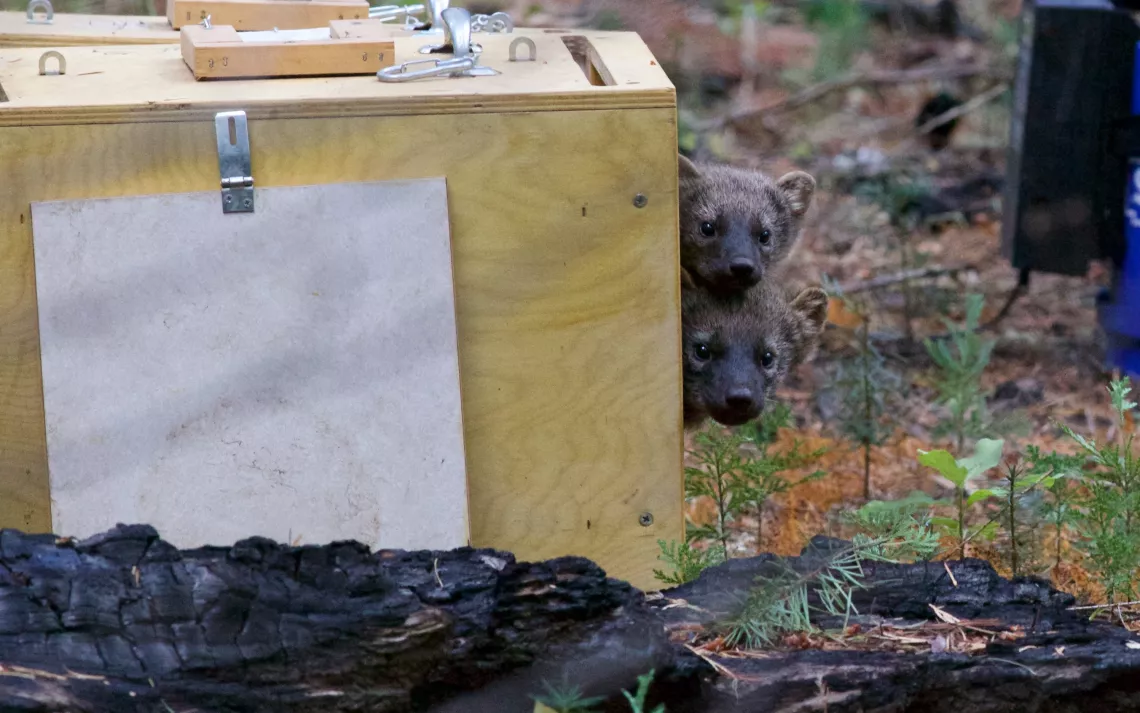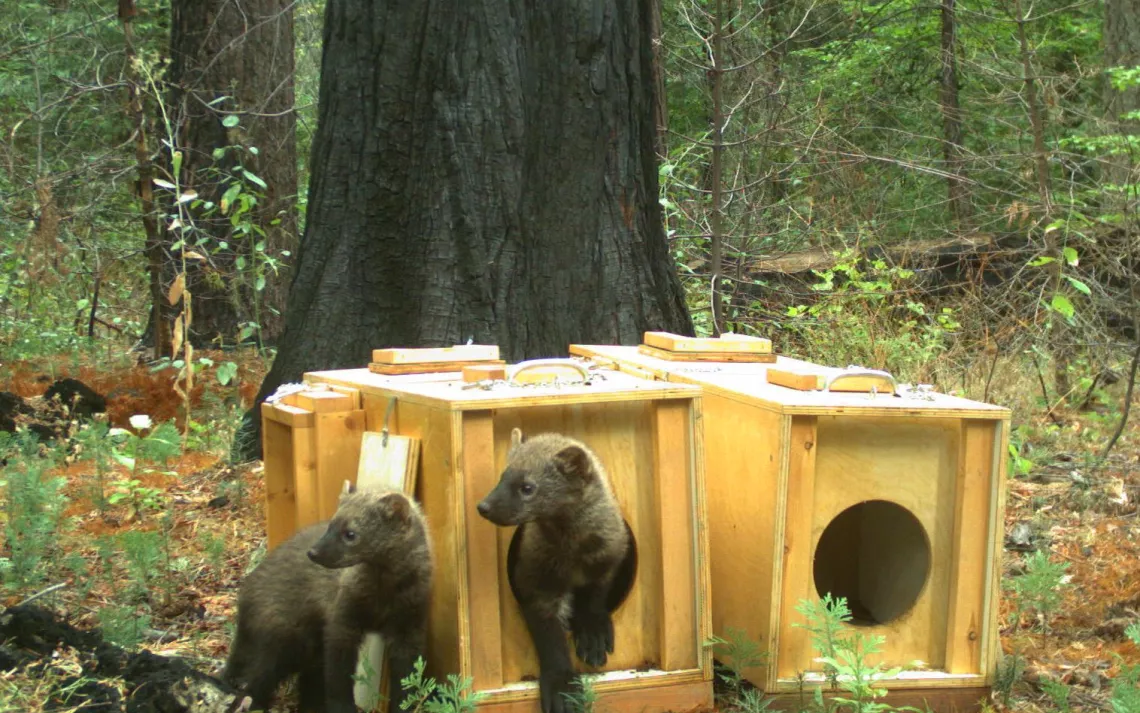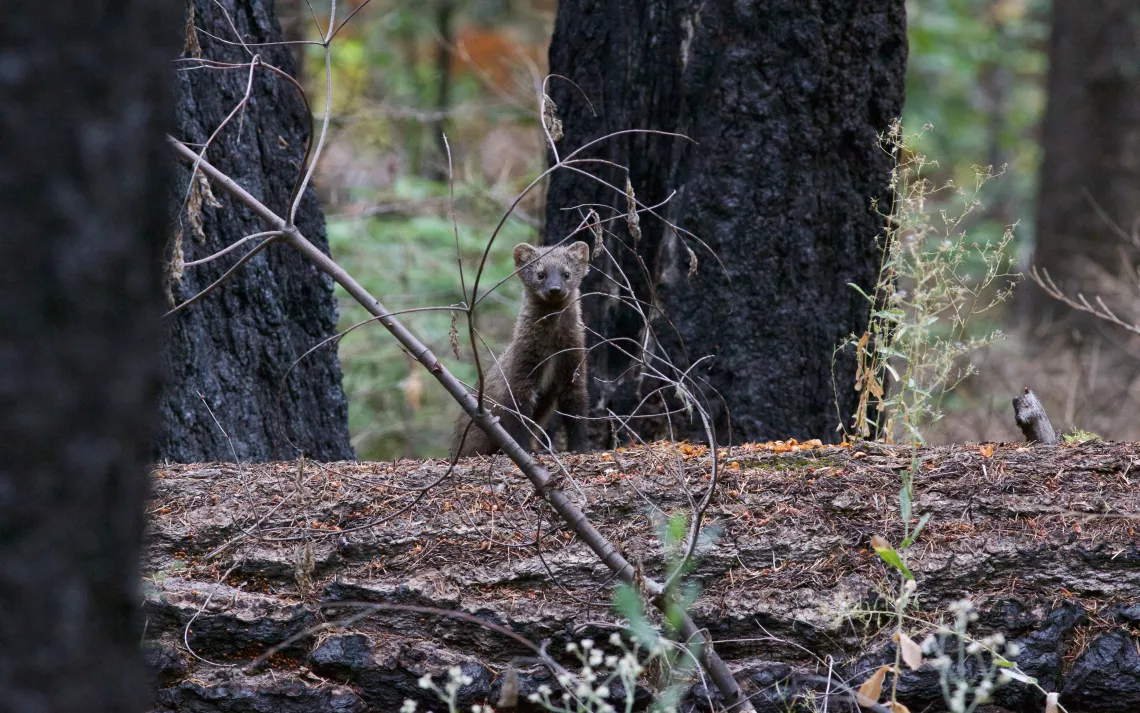Orphaned Fisher Kits Move into Yosemite
Fishers cats aren't members of the cat family, nor do they catch aquatic prey. They are, however, squeal-inducingly cute and a good reason to visit the Sierras this fall. The National Park Service announced this month that they released four orphaned, adolescent fishers into Yosemite National Park.
These relatives of the weasel are common in the boreal forests of Canada, and were once widespread in the northern American states. Their soft fur has made them popular targets for hunters, and despite restrictions, their numbers have yet to recover completely in their historic U.S. ranges.
The two sets of siblings were rescued south of the park on National Forest land when researchers discovered that the mothers—both radio collared—had been killed by predators. The monitoring is part of a four-year project by the National Park Service and the U.S. Forest Service to reintroduce fishers back into northern Yosemite. Found at about 8 weeks old, the young fishers, called kits, were unable to eat solid food and would not have survived on their own. They were brought to the Fresno-Chaffee Zoo where experts cared for them until they were weaned off milk.
Eventually, the plucky juveniles were transferred to the Fresno Wildlife Rehabilitation Foundation where they lived outdoors and learned to hunt live prey. A wild fisher's diet consists of hares, porcupines, and other small animals. They also forage for mushrooms, nuts, and berries, and won't turn down any carrion they discover. With their survival instincts honed, the six-month-old fishers were carefully discharged above the Merced River.
The new park residents are part of the small, isolated Sierra Nevada population of fishers that has struggled to rebound after local extinction in the early 20th century. Biologists hope that adding the kits into the Yosemite territory will help link up the currently fractured distribution. Officials will keep an eye on the four as they mature and hope to add more orphaned youngsters to the area in the future.
 The Magazine of The Sierra Club
The Magazine of The Sierra Club










